Related Research Articles

Troy is a city in Lincoln County, Montana, United States. The population was 797 at the 2020 census. It lies at the lowest elevation of any settlement in Montana. The town is on U.S. Route 2, near Montana Highway 56, in the Kootenai River gorge by the Kootenai National Forest.

Libby is a city in northwestern Montana, United States and the county seat of Lincoln County. The population was 2,775 at the 2020 census.
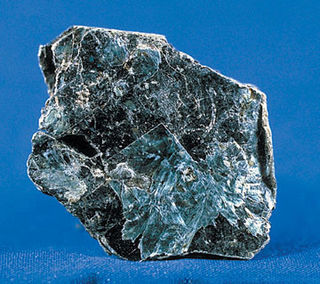
Vermiculite is a hydrous phyllosilicate mineral which undergoes significant expansion when heated. Exfoliation occurs when the mineral is heated sufficiently; commercial furnaces can routinely produce this effect. Vermiculite forms by the weathering or hydrothermal alteration of biotite or phlogopite. Large commercial vermiculite mines exist in the United States, Russia, South Africa, China, and Brazil.

Mesothelioma is a type of cancer that develops from the thin layer of tissue that covers many of the internal organs. The area most commonly affected is the lining of the lungs and chest wall. Less commonly the lining of the abdomen and rarely the sac surrounding the heart, or the sac surrounding each testis may be affected. Signs and symptoms of mesothelioma may include shortness of breath due to fluid around the lung, a swollen abdomen, chest wall pain, cough, feeling tired, and weight loss. These symptoms typically come on slowly.
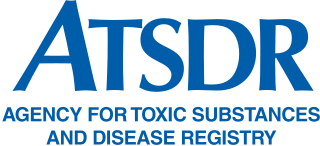
The Agency for Toxic Substances and Disease Registry (ATSDR) is a federal public health agency within the United States Department of Health and Human Services' Centers for Disease Control and Prevention. The agency focuses on minimizing human health risks associated with exposure to hazardous substances. It works closely with other federal, state, and local agencies; tribal governments; local communities; and healthcare providers. Its mission is to "Serve the public through responsive public health actions to promote healthy and safe environments and prevent harmful exposures." ATSDR was created as an advisory, nonregulatory agency by the Superfund legislation and was formally organized in 1985.
The mineral asbestos is subject to a wide range of laws and regulations that relate to its production and use, including mining, manufacturing, use and disposal. Injuries attributed to asbestos have resulted in both workers' compensation claims and injury litigation. Health problems attributed to asbestos include asbestosis, mesothelioma, lung cancer, and diffuse pleural thickening.
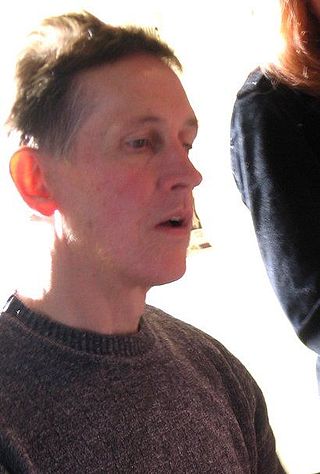
Mark Metcalf is an American television and film actor often playing the role of an antagonistic and aggrieved authority figure.

W. R. Grace and Co. is an American chemical business based in Columbia, Maryland. It produces specialty chemicals and specialty materials in two divisions: Grace Catalysts Technologies, which makes polyethylene and polypropylene catalysts and related products and technologies used in petrochemical, refining, and other chemical manufacturing applications, and Grace Materials and Chemicals, which makes specialty materials, including silica-based and silica-alumina-based materials, which are used in commercial products such as sunscreen and in chemical process applications.
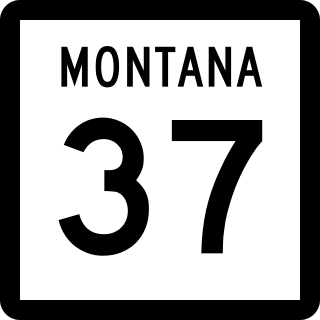
Montana State Highway 37 is a 67.048-mile-long (107.903 km) state highway in the US state of Montana. It begins in downtown Libby, Montana at US 2 and takes a meandering course northeastwards upstream along the Kootenai River and the eastern shore of Lake Koocanusa before terminating at U.S. Route 93 at the northern end of Eureka, Montana. Previously, MT 37 also followed US 93 from Eureka into Whitefish and turned down what is now MT 40 towards US 2 and Glacier National Park until at least 1942.
Pomfret is a desert town, the site of an old asbestos mine, on the edge of the Kalahari Desert in northwest South Africa. It was the administrative centre of Molopo Local Municipality before 18 May 2011, when the municipality merged with Kagisano to form the Kagisano–Molopo Local Municipality. Many of its inhabitants are former members of 32 Battalion, also known as Buffalo Battalion. These ex-soldiers were predominantly Portuguese-speaking Angolans who fought on the South African government side in Angola and Namibia, and after the end of the South African Border War to police the black townships. The community remains largely Portuguese-speaking.
William "Bill" Campbell is a former Time Magazine photojournalist and a current documentary filmmaker and the president of Homefire Productions, Inc. He is married to Maryanne Vollers.

Asbestos is a group of naturally occurring, toxic, carcinogenic and fibrous silicate minerals. There are six types, all of which are composed of long and thin fibrous crystals, each fibre being composed of many microscopic "fibrils" that can be released into the atmosphere by abrasion and other processes. Inhalation of asbestos fibres can lead to various dangerous lung conditions, including mesothelioma, asbestosis, and lung cancer. As a result of these health effects, asbestos is considered a serious health and safety hazard.
The Asbestos Disease Awareness Organization (ADAO) is a nonprofit organization in the U.S. that helps to preventing asbestos exposure to eliminate asbestos-related diseases such as mesothelioma, and protecting asbestos victims' civil rights through education, advocacy, and community initiatives. ADAO was founded by Linda Reinstein and Doug Larkin in 2004 and is headquartered in Redondo Beach, California. Three boards lead it: the Board of Directors, Science Advisory Board, and Prevention Advisory Board.
Alice – A Fight For Life is a documentary featuring 47-year-old Alice Jefferson, a British woman who developed malignant pleural mesothelioma thirty years after working for nine months at Cape Insulation's Acre Mill asbestos plant in Hebden Bridge, West Yorkshire. The film also explored the health issues surrounding the manufacture and use of asbestos products. Described by The Guardian newspaper as "a momentous film", the programme also explicitly linked asbestos with cancer, and attacked what it perceived as the government's complacency in limiting the manufacture and use of asbestos in Britain.
Stephen M. Levin was the medical director of the Mount Sinai Irving J. Selikoff Center for Occupational and Environmental Medicine, a professor of occupational medicine at the Mount Sinai School of Medicine, and the co-director of the World Trade Center Worker and Volunteer Medical Screening Program. A graduate of Wesleyan University and then New York University School of Medicine, Levin was born and raised in Philadelphia to working-class parents; his father was a carpenter, his mother a hospital worker. He was recognized worldwide as a leader in the field of occupational medicine, particularly due to his work on behalf of 9/11 workers and those injured by asbestos in the town of Libby, Montana.
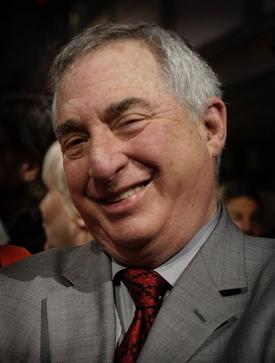
Andrew Jay Schneider was an American journalist and investigative reporter who worked for the Pittsburgh Press and Seattle Post-Intelligencer as a public-health reporter. He received back-to-back Pulitzer Prizes while working for the Press: one in Specialized Reporting in 1986 with Mary Pat Flaherty, and another for Public Service with Matthew Brelis and the Press in 1987. Schneider also co-authored a book about an asbestos contamination incident in Libby, Montana, entitled An Air That Kills.
Steve Gunderson is an American politician from Montana. Gunderson serves as a Republican member of the Montana House of Representatives from District 1, including Libby, Montana.

The 2018 wildfire season in Montana began around June, 2018 and ended around September, 2018.

Nic Davis is an American documentary filmmaker. Davis produced and directed the 2021 documentary film Enormous: The Gorge Story.
References
- ↑ "PBS Synopsis". PBS . Archived from the original on 2009-04-09. Retrieved 2017-09-03.